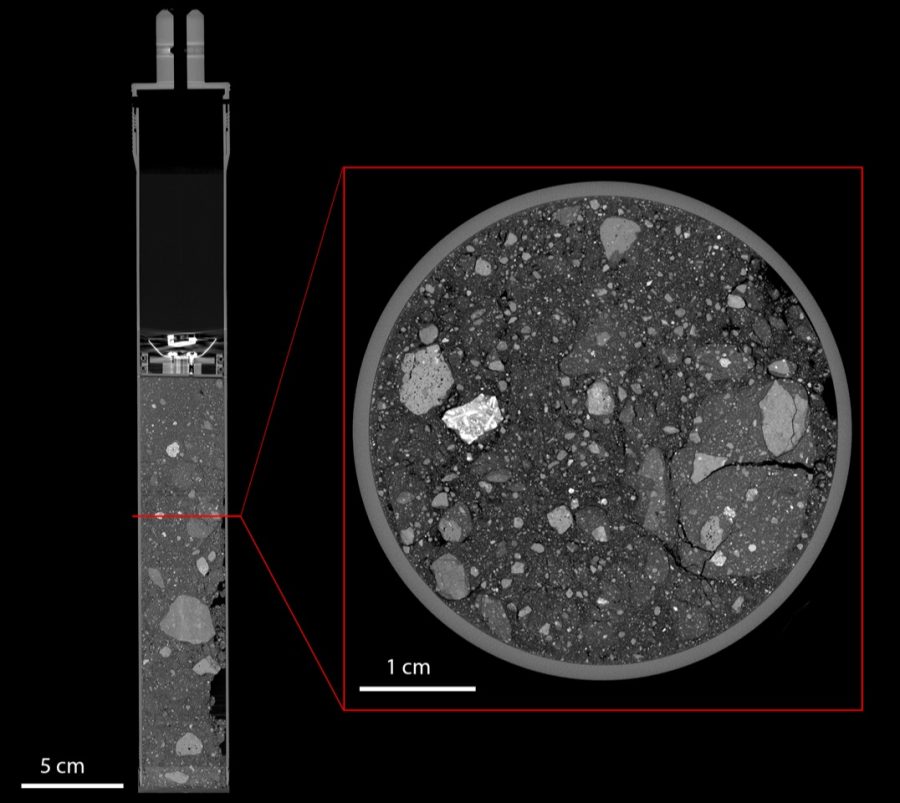UT lab selected by NASA for planetary science research initiative
February 15, 2023
NASA selected a UT lab as an inaugural facility for planetary science research, providing funding to the lab and promoting collaboration between scientists across the United States.
The UT High-Resolution X-ray Computed Tomography Facility hosts two powerful X-ray scanners used to capture images of samples such as meteorite fragments. Computational tomography, or CT, sends X-rays through samples to reconstruct an image of the object and determine the structure of the sample’s interior, said facility research associate Romy Hanna.
“When you go to a medical CAT scanner, they can see your bone and your vessels and your tissue, it’s like those all have different chemistries and densities,” Hanna said. “It’s the same concept. A planetary scientist will put in a meteorite or an engineering experiment and be able to see inside that object and tell some chemical information and a lot about structure.”
NASA selected the UT computed tomography facility’s research proposal, opening up the University’s facilities for use by other planetary scientists in exchange for NASA research funding. The lab is joined by eight more facilities, including labs at Brown University and the University of Virginia.
“Like any shared facility on UT campus, we are dependent on users coming to our lab and utilizing us,” Hanna said. “The more people who come to our lab and pay for these analyses, number one, the more science we enable, so that’s just awesome. But number two, it gives us financial stability to last into the future” Hanna said.
NASA’s selection of the lab will make it more accessible to other planetary science researchers, which research associate Matthew Colbert said will strengthen the research done in the lab.
“Ideally collaboration is at the root of most good science. We have a resource here (our CT scanner and image processing services) that researchers can (and do!) take advantage of to address their particular research objectives,” Colbert said in an email.
Moving forward with the grant, Hanna said the lab hopes more planetary scientists utilize the lab’s technology.
“Hopefully this would open the door for collaborations and more interesting projects and just pushing the limits of X-ray CT in planetary (science),” Hanna said.











